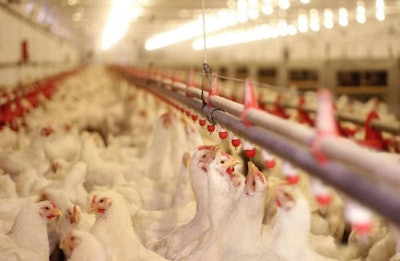

The USDA Animal and Plant Health Inspection Service’s report, “Fall 2015 HPAI Preparedness and Response Plan,” issued September 18, details how the agency will prepare for a future outbreak of highly pathogenic avian influenza (HPAI). The disease is expected to recur this fall when wild birds migrate south.
Highlights from the APHIS plan
- Strengthening biosecurity and enhancing wild bird surveillance to prevent or reduce future outbreaks
Details on how the agency will decide whether to deploy a vaccine for a possible future outbreak:
- Assessment of whether response measures are containing the disease
- The sector(s) of the poultry industry affected
- The potential impact of the outbreak and use of vaccine on domestic and international supplies and markets
Strengthening biosecurity on U.S. poultry farms
APHIS notes that while wild birds were responsible for introducing the HPAI virus into the environment in the U.S. earlier in 2015, the virus most likely spread other ways as well. Potential risk factors such as “sharing equipment between farms, entry of small wild birds into barns, proximity to other affected farms, and rendering dead birds,” were identified, according to the report. While producers are responsible for biosecurity on their premises, APHIS notes it is supporting producers through educational materials and a biosecurity self-assessment checklist, which is available online. The agency is also working with other groups that conduct on-farm regulatory functions to provide them with suggested biosecurity protocols.
The report also stated, “APHIS is publishing an interim rule on HPAI indemnity that will contain a provision requiring all future HPAI-affected commercial poultry producers to self-certify that biosecurity procedures were in place at the time HPAI was detected … Following this, we will collaborate over the next year with industry to design a biosecurity auditing system.”
Deploying an avian influenza vaccine
“We intend to use AI vaccines as a possible adjunct to, and not a replacement for, a future eradication effort,” APHIS stated in the report. USDA would provide doses of the vaccine from the stockpile for an initial response if the decision were to be made to vaccinate. “If the response is prolonged, we would need to re-evaluate our overall response strategy, including vaccination strategy.” Commercial poultry in a specific geographic area would be vaccinated, should vaccination be needed. This would be classified as a suppressive emergency approach.

















